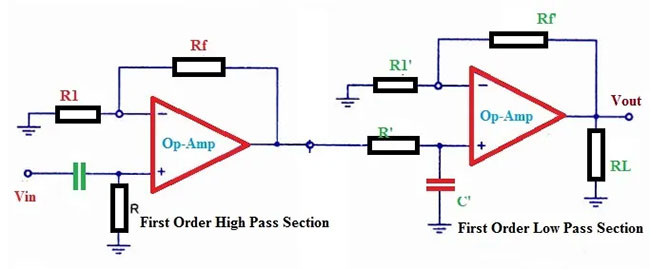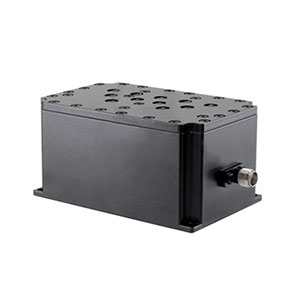What is a Bandpass Filter?
A bandpass filter is a type of filter used in electronic signal processing with the purpose of selecting signals within a specific frequency range while attenuating or eliminating signals outside that range. Bandpass filters find common applications in signal processing, communication systems, and audio devices, aiding in the removal of unwanted frequency components and improving signal quality. In this article, ATO industrial automation will provide an in-depth exploration of the structure, parameters, working principles, advantages, applications of bandpass filters, and discuss considerations during the design and implementation process.
Structure of Bandpass Filters
Bandpass filters typically consist of a cascaded combination of a low-pass filter and a high-pass filter. The low-pass filter allows signals below a certain frequency to pass through while attenuating signals above that frequency. Conversely, the high-pass filter permits signals above a certain frequency to pass through while attenuating signals below that frequency. By appropriately setting the cutoff frequencies of the low-pass and high-pass filters, the bandpass filter's functionality can be achieved.
Parameters of Bandpass Filters
The parameters of a bandpass filter commonly include the center frequency (fc), bandwidth (Bw), and stopband width (Bs). Here's a brief explanation:
- Center Frequency (fc): The frequency at the center of the passband range of the bandpass filter, usually measured in Hertz (Hz).
- Bandwidth (Bw): The width of the passband in the bandpass filter, indicating the range of frequencies passed through. It can be expressed in frequency or angular frequency. Common units include Hertz (Hz) or rad/s.
- Stopband Width (Bs): The width of the stopband in the bandpass filter, indicating the range of frequencies attenuated. It can be expressed in frequency or angular frequency. Common units include Hertz (Hz) or rad/s.
- Passband Maximum Attenuation (Ap): The maximum allowable attenuation in the passband of the bandpass filter, typically measured in decibels (dB).
- Stopband Minimum Attenuation (As): The minimum required attenuation in the stopband of the bandpass filter, typically measured in decibels (dB).
Working Principles of Bandpass Filters
The operating principle of a bandpass filter is based on the frequency domain characteristics of signals. The frequency domain represents the signal's distribution of energy across different frequencies, obtained through Fourier transformation, allowing observation of the signal's behavior at various frequencies. Bandpass filters leverage this frequency domain characteristic to select a specific frequency range and attenuate or filter out signals outside that range.
Applications of Bandpass Filters
Bandpass filters have diverse applications in practical settings:
- In audio devices, bandpass filters can be used to attenuate or eliminate noise, enhancing the quality of audio signals.
- In communication systems, bandpass filters are employed to select specific frequency ranges for signal transmission and demodulation.
- In image processing, bandpass filters can enhance or eliminate specific frequency details, improving image clarity.
Design of Bandpass Filters
The design and implementation of bandpass filters require consideration of multiple factors. First is the width of the passband and stopband, determining the frequency selectivity of the filter. The passband represents the desired frequency range, while the stopband represents the frequency range to be attenuated. The next consideration is the filter's order; a higher order generally results in better performance but increases design and implementation complexity. Finally, the filter's transfer function, describing the gain or attenuation at different frequencies, must be chosen based on specific application requirements.
In conclusion, a bandpass filter is a commonly used signal processing tool that selectively allows signals within a specific frequency range to pass through while attenuating or filtering out signals outside that range. Its applications in signal processing, communication systems, and audio devices contribute to improved signal quality and clarity. Designing and implementing bandpass filters involve considerations such as passband and stopband widths, filter order, and transfer function selection. The use of bandpass filters aids in better handling and analysis of signals, enhancing the performance and effectiveness of various applications.

